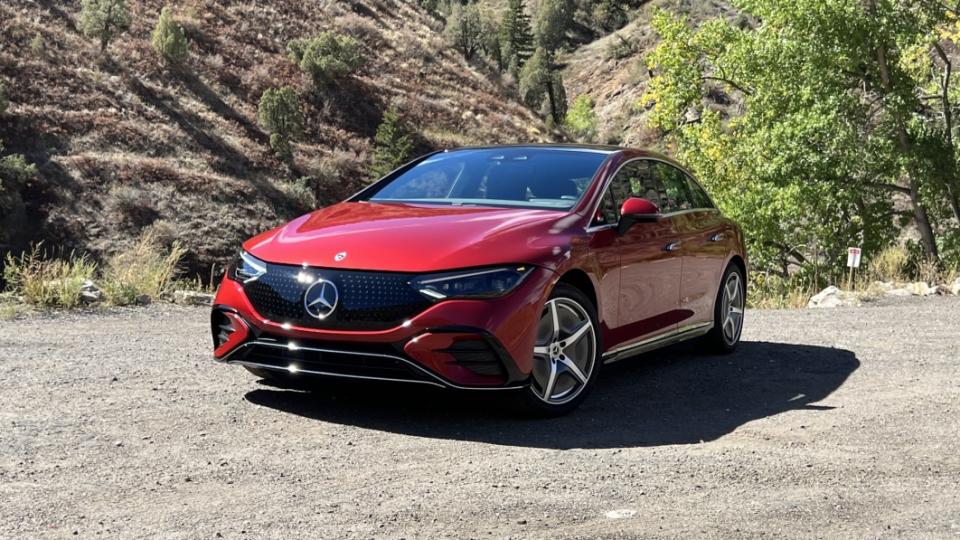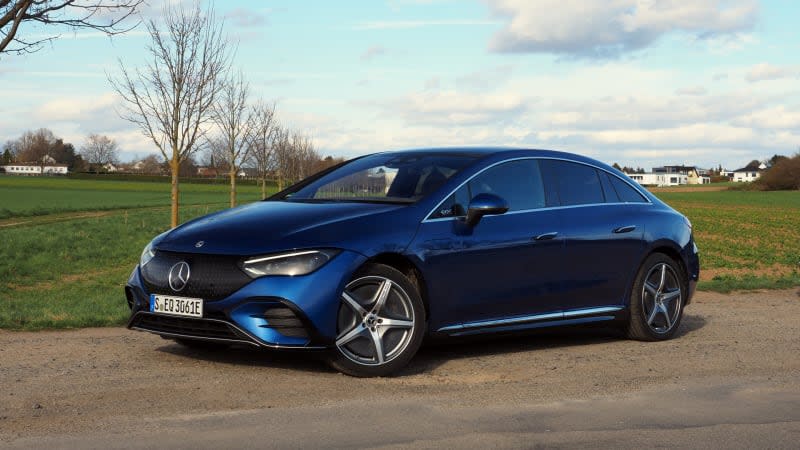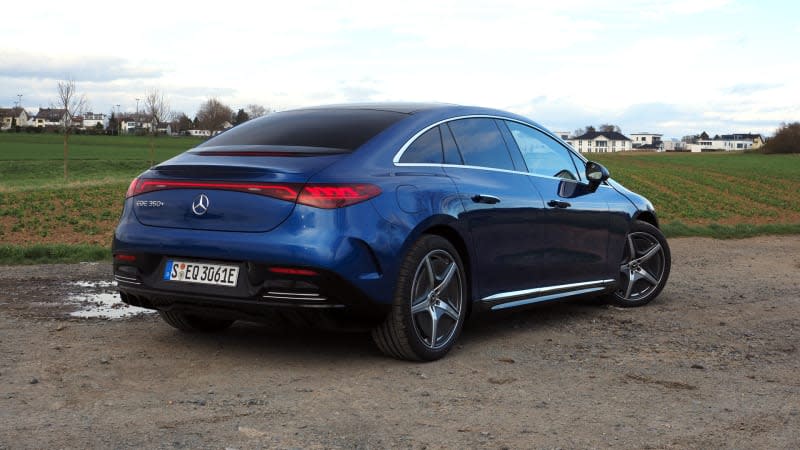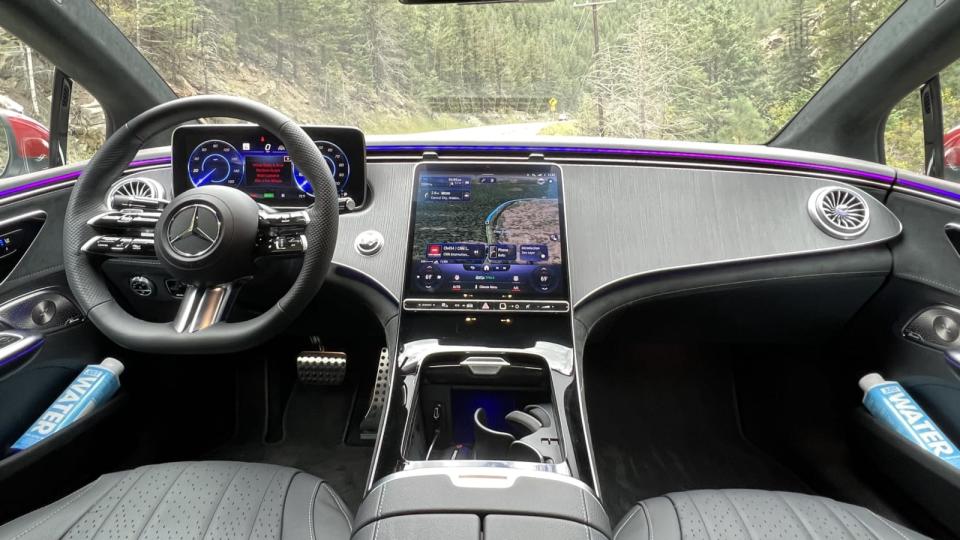2023 Mercedes-Benz EQE 350+ Road Test: Reimagining the Mercedes midsize sedan

DETROIT — What comes out the other side when Mercedes-Benz chucks a well-established midsize luxury sedan nameplate into its magical EV converter? Take one look at the 2023 EQE sedan and you know right away that this isn’t merely a gasoline car with an electric powertrain in place of its old grease-covered parts. This is a clean sheet, free of the stains of dirty diesel and CO2 emissions, and in a way, a complete reimagining of the midsize Mercedes sedan. Whether that’s for better or worse is entirely up to you.
If you’re familiar with Mercedes model hierarchies, you’ll recognize the 350 designation for a base powertrain in the company’s E-segment (midsize executive car) offerings. Our tester’s 4Matic configuration actually bumps it up the ranks a tad, as AWD in an EV means you’re getting a second motor. Like the base, rear-wheel-drive EQE 350+, this one comes with a 90.6 kilowatt-hour battery pack, however, total estimated range is down to 260 miles versus the single-motor’s 305 miles. Mercedes says the EQE can be fully charged in 9.5 hours on a Level 2 wall unit or from 10-80% in 32 minutes on a DC fast charger.
We’re still years away from EV power delivery being the norm rather than the exception, so contextualizing the EQE’s performance is tricky. Its total combined output is 288 horsepower (215 kW). That’s about what you’d expect from a run-of-the-mill, turbocharged four-cylinder engine in 2023. Those motors are tasked with moving 5,400 pounds of Mercedes plus whatever you put inside of it, which is not what you’d expect from a run-of-the-mill sedan. In fact, that’s pretty much the exact same weight as the much larger, gasoline-powered GLS 450, which packs a 362-hp biturbo V6.


An EQE 350 driven during our EQE first drive
Now here’s the kicker: despite the bigger SUV’s 20-plus-percent power advantage, it’s essentially no quicker to 60 than the EQE. Mercedes-Benz says the EQE 350+ can hit 60 in 6.0 seconds while the GLS can do it in 5.9. The reason? Torque. The dual-motor EQE has 564 pound-feet, whereas the GLS has 369. Not only that, but the torque produced by electric motors is largely available the moment they start spinning, meaning they’re typically much quicker than gasoline engines of equivalent horsepower. From a dead stop, the EQE can go full-tilt instantly. By comparison, gas-powered cars leaving the same stoplight seem like they’re working a lot harder just trying to keep up — because they are.
The electronic acceleration noises Mercedes programmed help drown out the outside world and contribute some drama to the event, but even that can be turned off. Frankly, this is the sort of serene shove in the back that luxury cars have always aimed for but usually fall short of due to their internal-combustion limitations. True luxury cars don’t have big engines because they’re meant to be hustled everywhere; they have big engines so they can don’t have to work nearly as hard to go just as fast as the rest of us. And at that, the EQE excels.
Dynamically, the script gets flipped — to an extent. 5,400 pounds is a lot of mass to throw around, and even if the electric motors are eager to get it moving (they are “permanently excited,” after all), you still have to turn and stop. Mercedes offers several levels of electric regeneration activated by wheel-mounted paddles that in a different car would control a transmission. There is no one-pedal drive mode, but the max regen setting will drag you down to a crawl before requiring you to take over with the brake pedal. As with the EQS but unlike the EQB, that brake pedal moves by itself to emulate where it would be if you had been braking the whole time. I didn’t have an issue with it, but others have, finding it difficult to stop the car smoothly. Either way, we feel it’s a strict downgrade from both conventional hydraulic brakes and the one-pedal arrangement offered by many EV builders, including BMW.
Corners are a bit more of a mixed bag. The sedan’s already-advantageous center of gravity is augmented by the placement of the battery pack low in the chassis, so body control remains solid despite the hefty curb weight and plush ride. It’s frankly impressive how determinedly the EQE will nose into a corner when asked. At least some credit has to go to the rear-axle steering system (see video at the bottom of this page), but even with this extra mechanical assistance, the EQE lacks the sharp reflexes and feedback of, say, the smaller and somewhat lighter BMW i4.


 Yahoo Autos
Yahoo Autos 
